There’s no such thing as a Supercluster
The largest structures in the Universe are phantasms, in the process of self-destructing.
Image credit: NASA, N. Benitez (JHU), T. Broadhurst (Racah Institute of Physics/The Hebrew University), H. Ford (JHU), M. Clampin (STScI),G. Hartig (STScI), G. Illingworth (UCO/Lick Observatory), the ACS Science Team and ESA, of Abell 1689.
“I was confided to your loyalty and accepted by your treason; you offer my death to those to whom you had promised my life. Do you know who it is you are destroying here? It is yourself.” –Victor Hugo
When you look up at the night sky, the stars of the Milky Way are literally everywhere. Through a telescope, billions upon billions of these stars are visible, but it’s when we peer beyond these stars, out into the empty expanse of space, that we see what lies beyond.
Much of what we see are actually stars within our own galaxy that are too faint to be seen without a large-aperture telescope, but looking beyond them are distant galaxies, millions or even billions of light-years distant. And while there are some galaxies out there that exist in relative isolation — known as “field” galaxies — there are also great concentrations of them that we can see.
These concentrations are often on the low end, like we see in our local group, which consists of Andromeda and the Milky Way as our two largest members, followed by the much smaller Triangulum Galaxy and then a few dozen even smaller, irregular galaxies like the Magellanic Clouds.
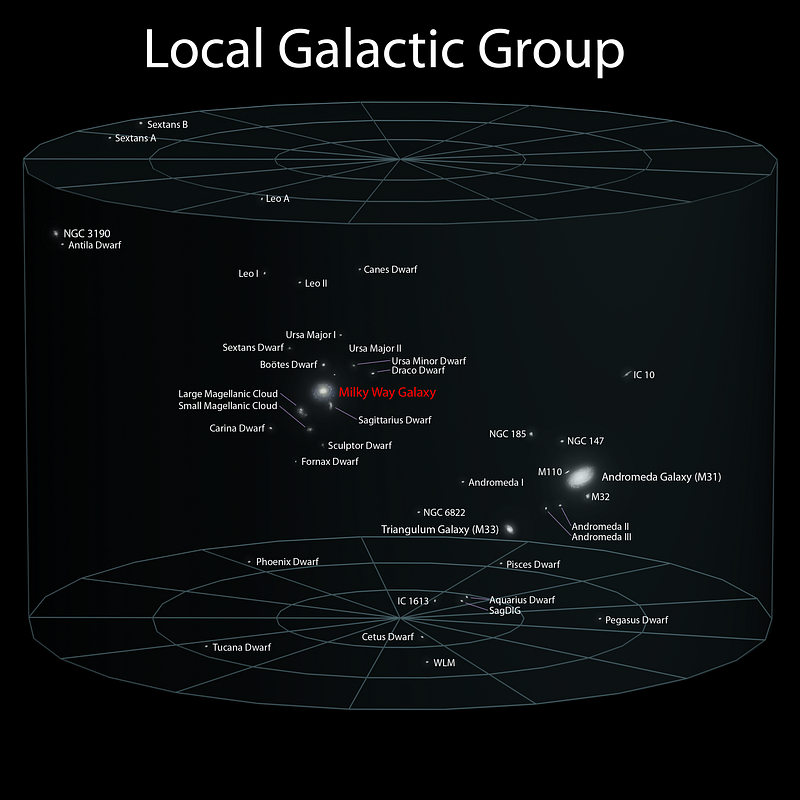
But beyond these little, isolated groups are huge clusters of galaxies, where thousands of Milky Way-sized (and larger) galaxies are all concentrated into the same region of space, gravitationally bound together where they’ll eventually merge into one super-sized galaxy. Some of these behemoths are already well on their way to becoming the ultimate monstrosities in the Universe!
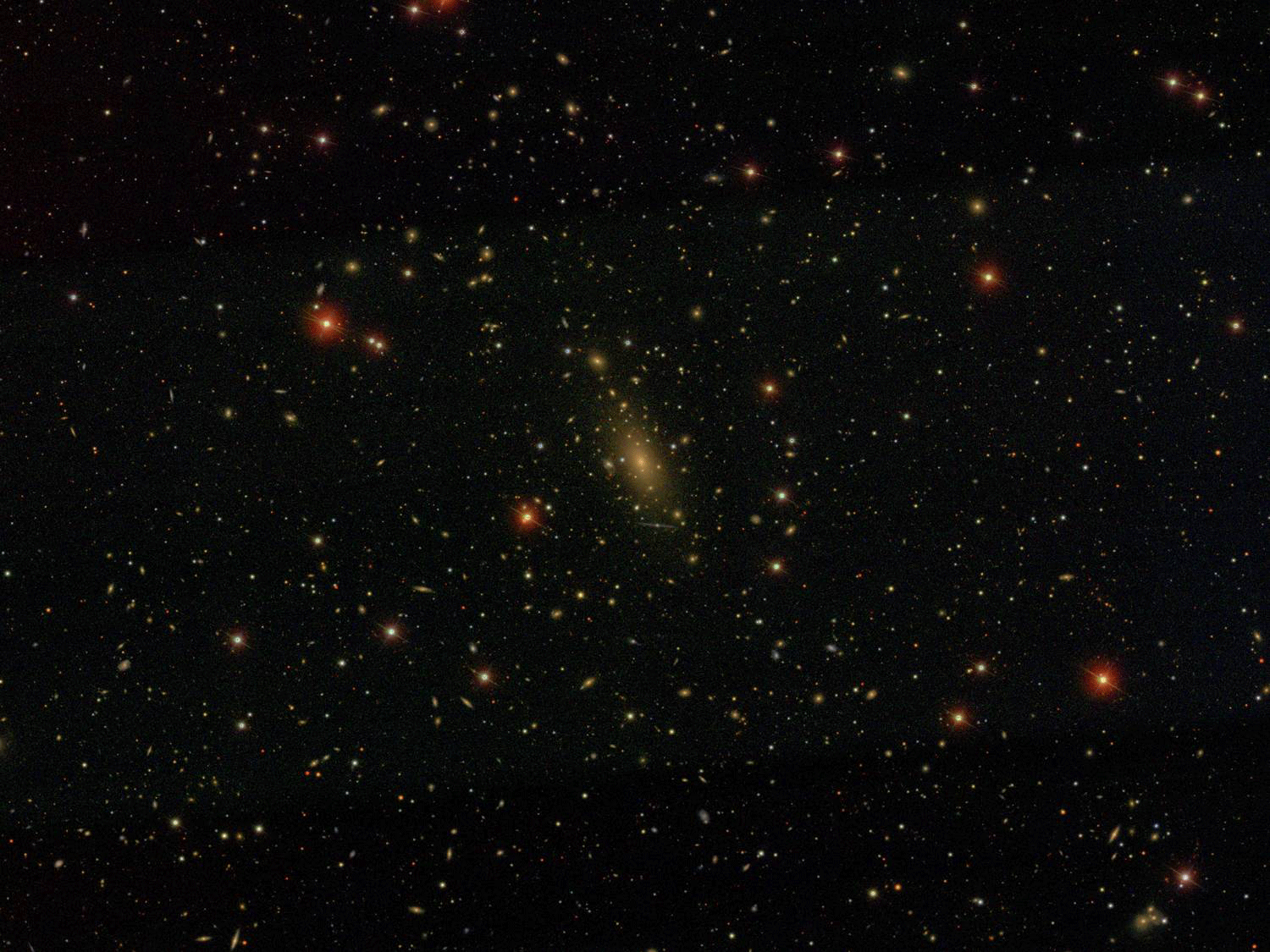
But although these clusters are incredibly large and dense, often containing upwards of a quadrillion stars — or 1,000,000,000,000,000 solar masses — spanning tens or even hundreds of millions of light-years, the Universe has structures that become apparent on even larger scales.
You see, if we mapped out all the galaxies in a region of space, we’d find that small groups of galaxies — groups like our own — align in structures that look like tendrils, or filaments. Where two filaments intersect one another, we see clusters, or even denser regions of galaxies. And where the greatest numbers of filaments come together, that’s where the richest clusters of all live. And the regions in between? Gaping cosmic voids, giant regions of nearly empty space, with only small, sparse galaxies that are even (very likely) often below our threshold to detect them.
On large scales, this is what the Universe looks like.
But what about even larger structures than clusters? What about this vast cosmic network?
Surely you’ve heard the term supercluster before, where our Milky Way and local group are part of a giant cosmic structure that includes the other nearby galaxy groups and the giant, nearby Virgo cluster, making up our local (Virgo) supercluster. And our supercluster is just one of many, that themselves are arranged together, forming an even larger structure!
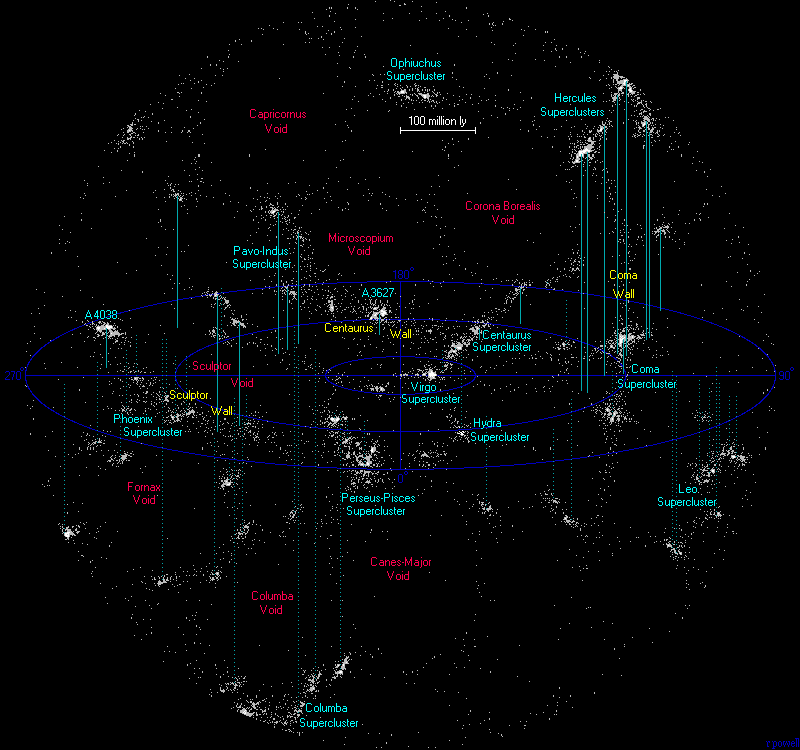
On the largest scales of all, these filamentary structures, connected at nodes and with vast, empty voids between them, make up a cosmic web. We think of this — the large-scale structure of the Universe — to be the ultimate in what the Universe looks like. The fact that our best simulations of gravitation, the ones that include the right mix of normal matter, dark matter and dark energy, reproduce to arbitrary accuracy the Universe we actually observe, tells us that we think we’re on the right track to understanding the physics of the Universe we live in.
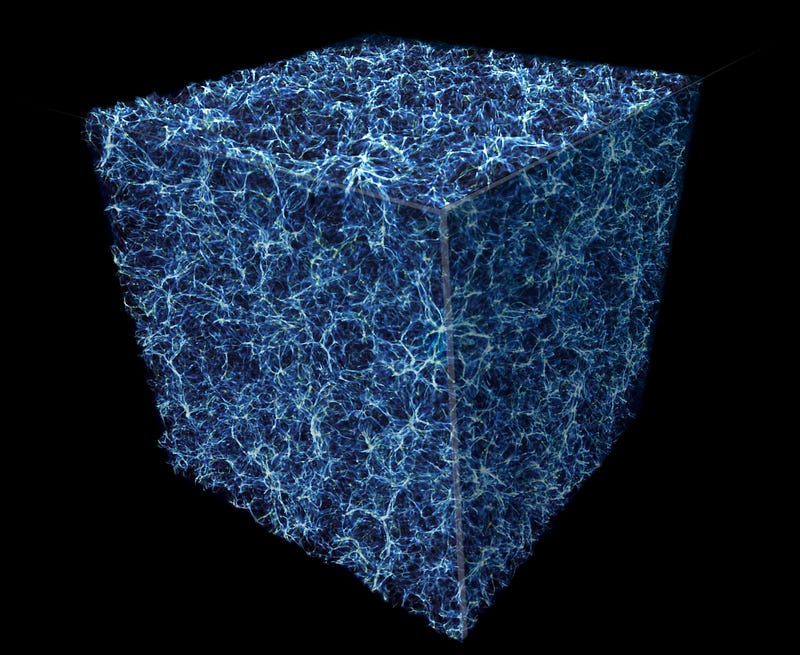
But here’s the thing: just because something looks like a structure doesn’t necessarily mean it is a structure.
Consider one of the most simply structures in the Universe: a proton and an electron, separated by a distance of only around 100 picometers.
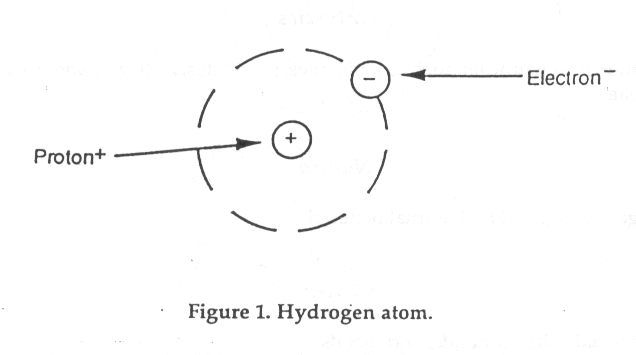
You’d assume, as I did above, that it would be a hydrogen atom. Of course, it could be, but only if the proton and electron had small enough kinetic energies so that they could bind together! If this electron were moving close to the speed of light, the proton and electron would rapidly fly apart, and wouldn’t be bound together at all!
Why would I bring up something as small as an atom when talking about the largest scales in the Universe? Because this same principle — of what’s bound and what’s unbound — applies.
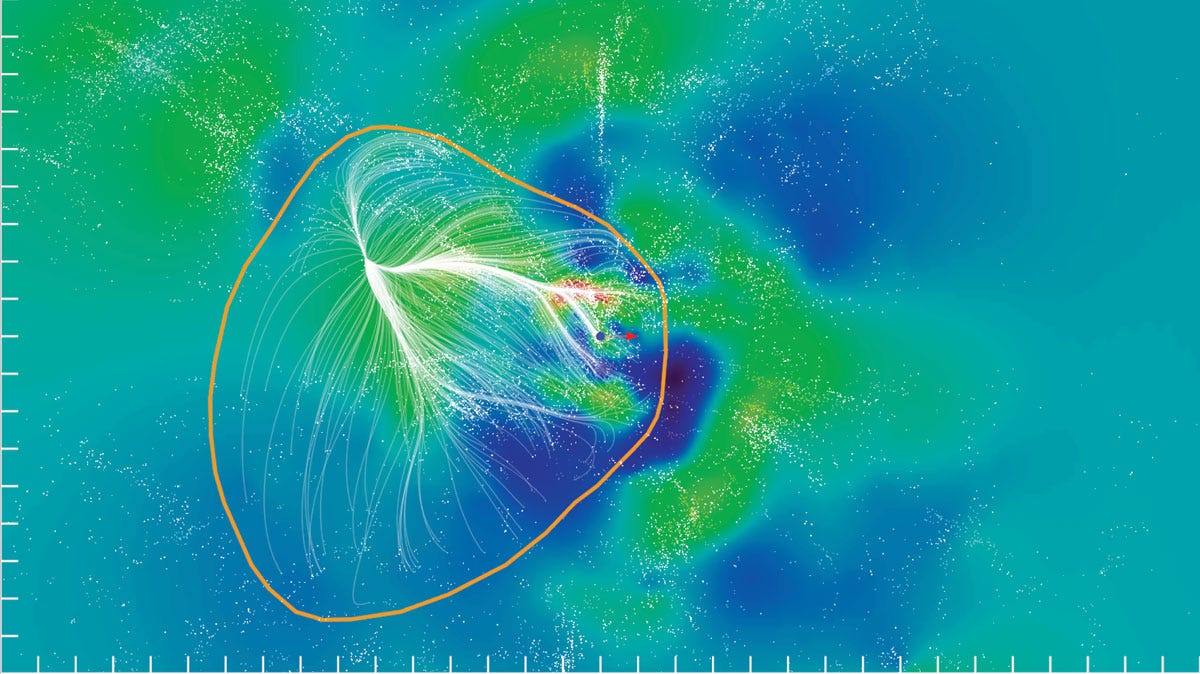
This image was just released: a map of the supercluster Laniakea, a structure that contains ourself, the Virgo Cluster, and many other clusters large-and-small. The orange blob is approximately 500 million light-years in diameter and contains roughly a hundred quadrillion solar masses, or about 100,000 times the mass of the Milky Way.
But is it a structure at all?
Here’s the thing. If the Universe were only made up of normal matter, we’d have the expansion of the Universe fighting against the gravitational pull of all the structures inside it. Given a large enough amount of time, not only clusters but superclusters and even larger filamentary structures would collapse, and form progressively larger-and-larger bound entities as time went on.
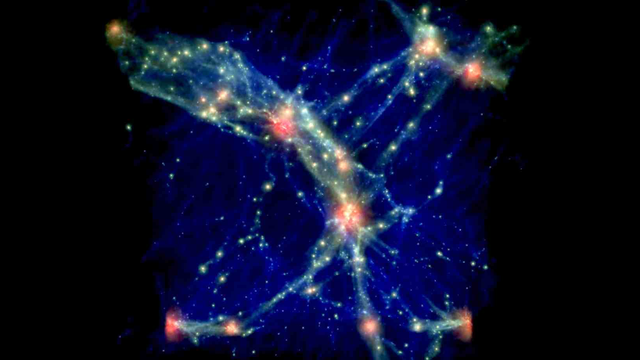
Structures containing not only thousands but millions or even billions of galaxies, structures spanning billions or even tens of billions of light years in size, could be gravitationally bound to one another, eventually contracting-and-merging to form a single galaxy so large it would rival the presently observable Universe!
If our Universe only had normal matter, we’d have some serious explaining to do.

But we don’t live in a Universe made up exclusively of matter, normal or dark. We live in a Universe that’s dominated by dark energy, or an energy intrinsic to space itself.
And that changes everything.

Because for the first eight-or-so billion years of the Universe’s existence, structures grew and grew, on all scales. Galaxies formed and merged together, groups and clusters formed and attracted one another, with many merging together, and structures on even larger scales began to form, as gravitational attraction began to draw these structure towards one another against the expansion of the Universe.
But about six billion years ago, the Universe began to accelerate. And that means that whatever structures weren’t already gravitationally bound together, never would be. Instead, the accelerated expansion of the Universe would work to drive them apart.

That’s exactly what we see happening, mind you. We can still see the gravitational effects of these giant groups, clusters and tandems of clusters, and they still look like a supercluster when we consider galaxy counts and relative densities, but the reality is that these giant collections of galaxy clusters that we call superclusters are not bound structures, and will never shrink in size or have their member clusters merge together.
Thanks to the properties of the Universe we live in — thanks to dark energy, or the fact that space itself has an intrinsic, non-zero energy — what we currently call “superclusters” aren’t typically gravitationally bound together, and will instead fly apart as time continues to go on in our accelerating Universe.
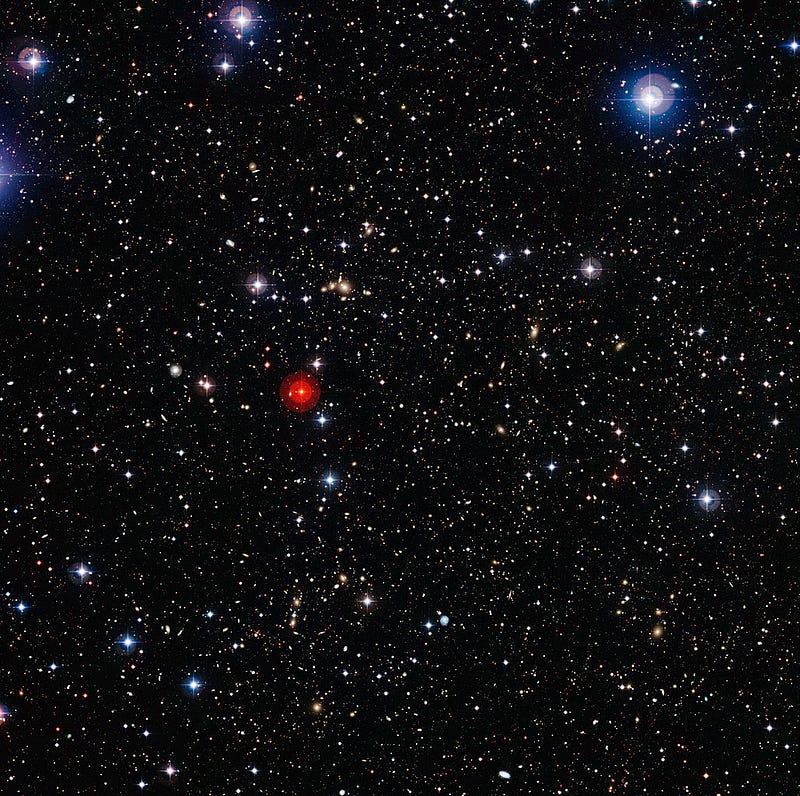
So enjoy the other “supercluster” members of Laniakea for what they are: groups and clusters of galaxies that are neither bound to us nor to one another, that are close and massive enough to affect our velocities through space but not close and massive enough to alter our cosmic fate or bring us together in the future. We might still call them superclusters, but they might not be so “super” after all!
Leave your comments at the Starts With A Bang forum on Scienceblogs!





